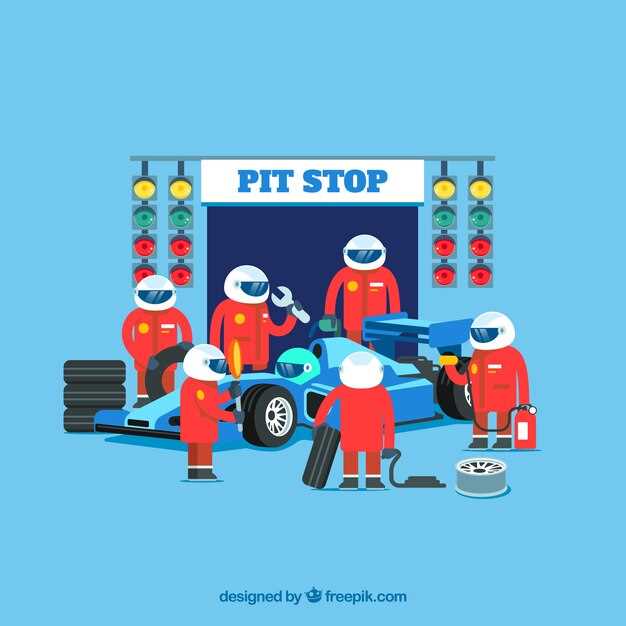
In the fast-paced world of motorsports, safety is paramount. Drivers are trained to react swiftly in various scenarios, but understanding quick escape techniques can be a lifesaver during emergencies. Whether it’s a fire, a collision, or a mechanical failure, having a plan in place is crucial for a successful release from the vehicle.
One of the key aspects of emergency preparedness is mastering the art of a rapid exit from the car. In an urgent situation, every second counts. The ability to quickly unbuckle a safety harness, disengage the steering wheel, and exit the vehicle can mean the difference between safety and disaster. Practicing these techniques regularly ensures that they become second nature when adrenaline spikes during a race.
Training must also involve familiarization with the specific race car’s safety features and emergency systems. Knowledge about the quickest routes to an exit and how to deal with onboard fire suppression systems can significantly aid drivers in high-pressure situations. By developing a mindset focused on quick actions and effective decision-making, drivers can handle emergencies with confidence and composure.
Mastering the Quick Release Mechanism

In the high-stakes environment of race car driving, every second counts, especially during emergencies. The quick release mechanism is an essential feature designed to facilitate a rapid exit from the vehicle when every moment is critical. Understanding how to effectively use this mechanism can be a lifesaver on the track.
The quick release mechanism typically consists of a lever or button that, when activated, disengages the seatbelt or opens the cockpit canopy. It is crucial for drivers to familiarize themselves with the location and operation of this release system before hitting the track. A well-practiced driver is more likely to execute a swift exit in emergencies.
Training with the quick release mechanism should involve multiple drills in a controlled environment. This practice helps build muscle memory, allowing the driver to react instinctively under pressure. Focus on achieving a quick release without hesitating, ensuring that the exit pathway is clear and unobstructed. In moments of panic, knowing that the release is automatic can greatly reduce the cognitive load on the driver.
Utilizing the quick release effectively also requires maintaining overall situational awareness. Drivers must regularly check their harness setup and ensure that the mechanism remains in optimal condition. Any malfunction can lead to dangerous delays during critical situations, making regular maintenance mandatory.
Ultimately, mastering the quick release mechanism will empower race car drivers to navigate emergencies with confidence. The ability to exit the vehicle swiftly can mean the difference between safety and disaster, reinforcing the importance of training and preparedness in the fast-paced world of racing.
Identifying and Utilizing Fire Exits on the Track

In the high-stakes world of race car driving, knowing the location of fire exits is crucial for ensuring driver safety. Emergencies can arise unexpectedly, making it essential to identify these exits and understand how to utilize them effectively.
Fire exits are designated routes that allow drivers to escape dangerous situations, such as vehicle fires. Familiarizing oneself with the track layout before any race can significantly enhance chances of a safe exit in an emergency. Fire exits are often marked clearly, and they may include barriers or specific paths leading away from the main racing area.
When a fire arises, quick response is vital. Drivers must remain calm and execute a series of steps to maximize their chances of a safe release from the vehicle. As soon as a fire is detected, assess the nearest fire exit and make a mental note of its location. If the vehicle is engulfed in flames or smoke, remember that time is of the essence.
To utilize a fire exit effectively, implement the following strategies:
- Quickly unbuckle your seatbelt to ensure freedom of movement.
- Check the surroundings through the driver’s side window. If flames threaten that side, consider exiting through the passenger door or window if it’s safer.
- Once outside, move directly towards the identified fire exit while staying low to avoid smoke inhalation.
- Inform track officials about the situation as soon as you reach safety.
Preparation and knowledge of fire exits can make a significant difference in emergency situations on the track. Always prioritize personal safety and remain vigilant during races.
Practicing Emergency Egress Drills for Race Situations
In high-speed racing environments, the potential for emergencies is a constant reality. To ensure the safety of drivers, it is crucial to practice quick egress methods that allow for immediate exit from the vehicle in critical situations.
One fundamental aspect of these drills is simulating various emergency scenarios, such as a vehicle fire or rollover. Participants should frequently rehearse how to rapidly unbuckle their safety harnesses, open the cockpit, and exit the car. Simulation training enhances muscle memory, allowing drivers to respond instinctively when the need arises.
Moreover, team members should be trained to assist in the egress process. Clear communication and defined roles can expedite the exit in high-pressure situations. Fire safety gear should be incorporated into these drills, familiarizing drivers with operating in their full equipment during emergencies.
Practicing egress should not be confined to the racetrack. It can be conducted in a controlled environment that replicates the unique conditions of a racing event. Regular sessions help maintain readiness and confidence for when every second counts.
Overall, establishing a routine for practicing quick emergency egress drills greatly reduces risks, ensuring that drivers are prepared to exit swiftly and safely, regardless of the circumstances they may face on the track.
